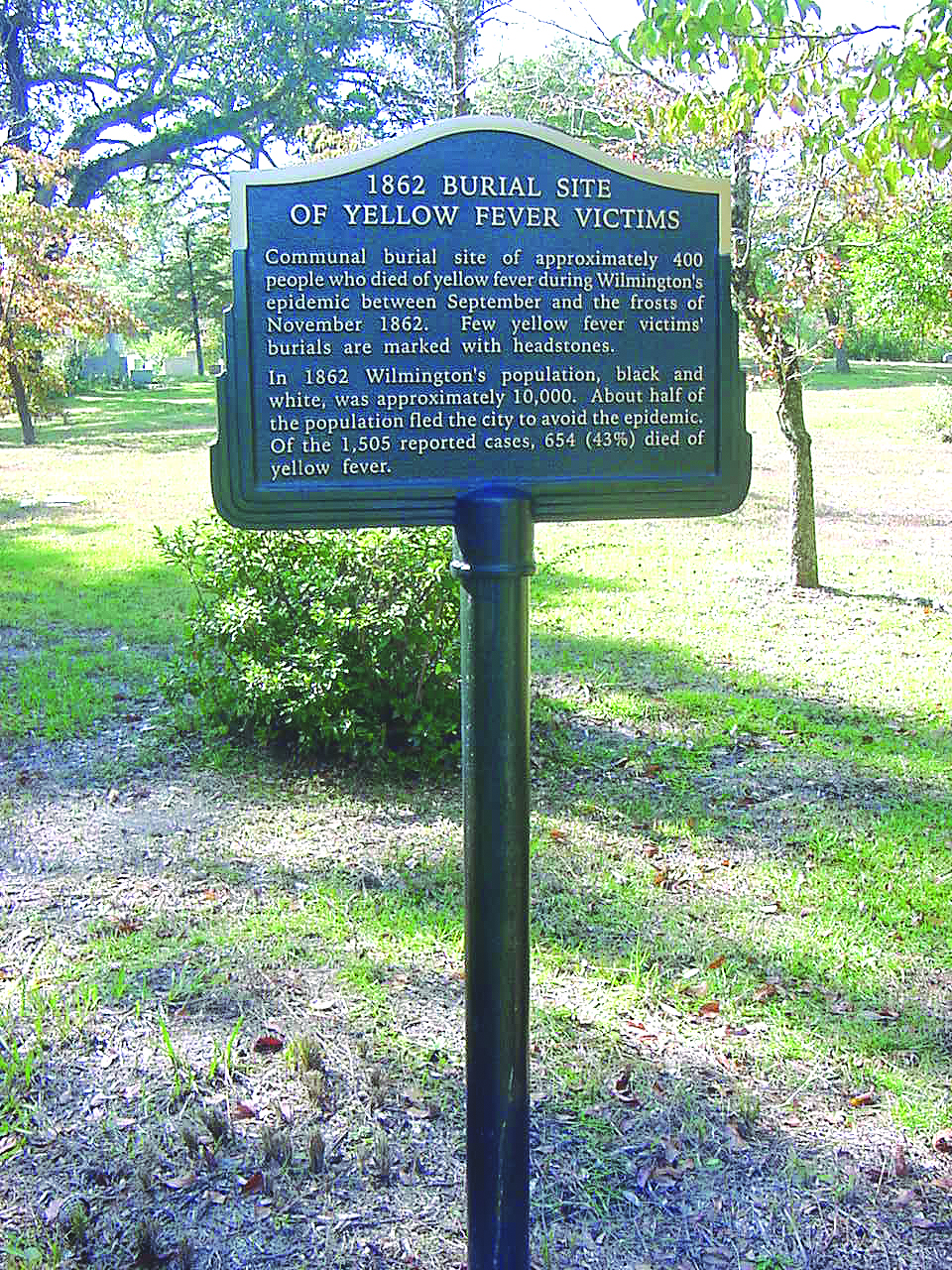Blast from the Past: Yellow Jack comes to Boomtown Wilmington

Oakdale Cemetery is home to a plot where yellow fever victims were buried in mass graves during the epidemic of 1862. (Photo courtesy of Jack E. Fryar, Jr.)
Editor’s Note: Blast from the Past is a recurring feature where stories from the Cape Fear region’s history are shared. For the inaugural post, local historian and publisher Jack E. Fryar Jr. describes a time before the coronavirus pandemic when Wilmington found itself in the grip of a different dangerous contagion.
To the people of Civil War Wilmington, death came with the tide as the blockade runner Kate docked along the bustling riverfront.
When it was learned members of the crew were infected by a deadly virus, the ship was immediately quarantined. In reality, the yellow fever that would kill off a third of what was at the time North Carolina's largest city was probably already lurking in the bustling mix of soldiers, sailors, slaves, speculators and civilians who made up the wartime port city.
In 1862 Wilmington was a boomtown. The unique geography of the lower Cape Fear, with its two river entrances separated by Frying Pan Shoals, made the city and its three railroad lines an integral part of the Confederate war effort. It was also a favorite of the fast ships bringing the Confederacy's much needed supplies from places like Barbados and Bermuda.
But along with the bullets, buttons, medicines and butter they carried, sometimes there were other things – more deadly, invisible things.
Yellow fever was no stranger to port cities along the east coast, including Wilmington. But in the second year of a war that almost everyone had believed would end in a matter of months, the combination of overcrowding, poor public health practices and a lack of understanding about viruses and how they are transmitted made Wilmington an incubator for the deadly disease.
Yellow fever was first noticed in Wilmington after the Kate docked in August 1862, arriving from Nassau in the Bahamas, then being ravaged by the deadly disease. Local health officials moved the ship’s infected crew members to Wilmington boardinghouses so that the vessel could be unloaded. It was only a matter of time before the contagion spread.
Yellow fever is spread by mosquitoes, which lowland swampy areas like Wilmington have in abundance, but that would not be discovered for two decades after it hit the port city. It attacks the liver, kidneys, and heart, producing muscle aches, chill and bloody black "coffee ground" vomiting before death finally ends a victim's agony. The failing liver produces a yellowish tint to the skin and eyes that gives the disease its name.
Locals also called it Yellow Jack.
Authorities thought yellow fever was carried on the air, so barrels of tar and pitch were set alight on downtown street corners in hopes that the pungent black clouds of smoke it produced would defend against the fever's spread. Those who could afford it left town.

The first victim died in early September, but within weeks the death toll rose beyond the ability of locals to keep track of who had perished. Oakdale Cemetery has a large plot where the mass graves of the victims were namelessly interred.
John D. Bellamy remembered in his memoir playing in the yard of his family's grand house at Fifth Avenue and Market Street as wagons loaded with corpses rolled past on the route to Oakdale.
The epidemic killed at least 700 people before it ended in November, as the first freeze of the year killed off the mosquitoes that spread it. That number does not include any enslaved who may have perished, as no one kept track of slave deaths in official records.


















